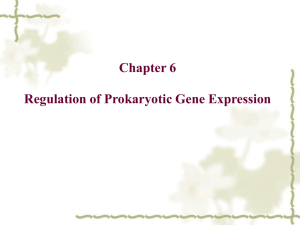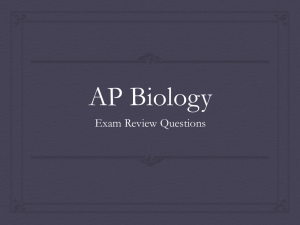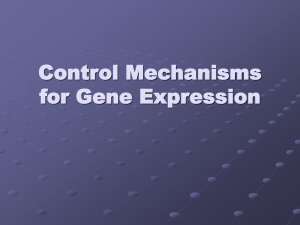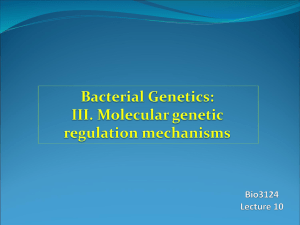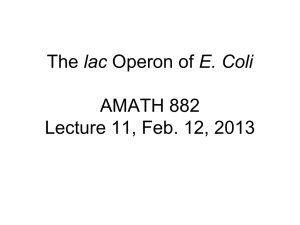Regulation of gene activity
advertisement
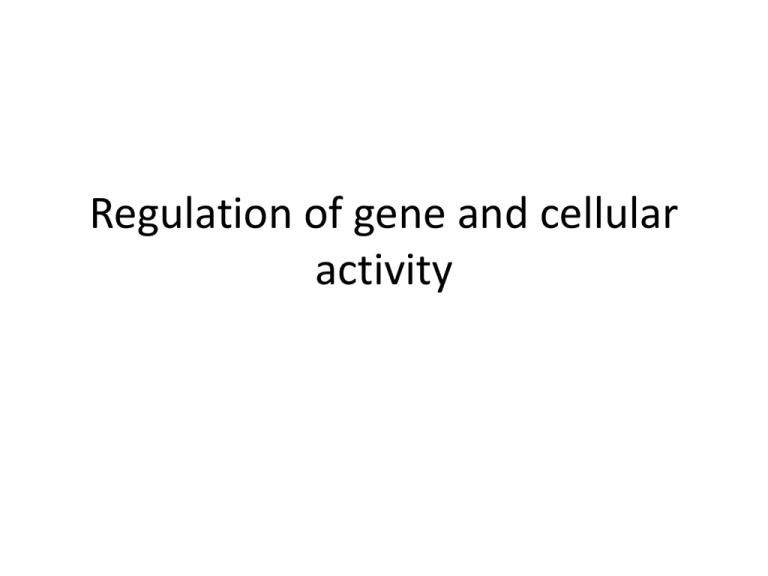
Regulation of gene and cellular activity Regulating Gene Expression • Cells use different mechanisms to sense and respond to conditions within or outside the cell. • Regulatory proteins help a cell sense internal changes and alter its gene expression to match. Figure 10.1A Figure 10.1B and C Figure 10.3 Regulating Gene Expression • Microbes control gene expression at several levels: • • • • • - Alterations of DNA sequence - Control of transcription - Control of mRNA stability - Translational control - Posttranslational control The E. coli Lactose Operon • The lactose utilization lacZYA operon of E. coli was the first gene regulatory system described. • First, here’s how lactose is transported and metabolized. Figure 10.6 The Organization of the LacZYA Operon Figure 10.5A Scenario 1: Absence of Lactose • LacI binds as a tetramer to the operator region. • - It represses the lac operon by preventing open complex formation by RNA polymerase. Figure 10.5B Scenario 2: Presence of Lactose • b-galactosidase (LacZ), when at low concentrations, cleaves and rearranges lactose to make the inducer allolactose. • Allolactose binds to LacI, reducing its affinity to the operator and thus allowing induction of the operon. Figure 10.5C Activation of the lac Operon by cAMP-CRP • Maximum expression of the lac operon requires the presence of cAMP and cAMP receptor protein (CRP). • - The cAMP-CRP complex binds to the promoter. • - Interacts with RNA pol to increase the rate of transcription initiation Figure 10.8 Catabolite Repression • In catabolite repression, an operon enabling the catabolism of one nutrient is repressed by the presence of a more favorable nutrient (commonly glucose). The biphasic curve of a culture growing on two carbon sources is often called diauxic growth. Figure 10.10 Catabolite Repression • Glucose transport by the phosphotransferase system causes catabolite repression by inhibiting the LacY permease activity. • - This is termed inducer exclusion. Figure 10.11 The E. coli Lactose Operon • Animation: The lac operon Click box to launch animation Figure 10.15 Attenuation of the trp Operon • Attenuation is a regulatory mechanism in which translation of a leader peptide affects transcription of a downstream structural gene. The attenuator region of the trp operon has 2 trp codons and is capable of forming stem-loop structures. Figure 10.16A The Transcriptional Attenuation Mechanism of the trp Operon Figure 10.16B and C Figure 10.18 Figure 10.24 Figure 10.26A Figure 10.28 Quorum Sensing • Quorum sensing refers to the process where bacterial cells work together at high density. - It was discovered in Vibrio fischeri, a bioluminescent bacterium that colonizes the light organ of the Hawaiian squid. Figure 10.30ACD Figure 10.31 Transcriptional Attenuation • Animation: Transcriptional Attenuation Click box to launch animation Chemotaxis: Molecular Events • Animation: Chemotaxis: Molecular Events Click box to launch animation Quorum Sensing • Animation: Quorum Sensing Click box to launch animation

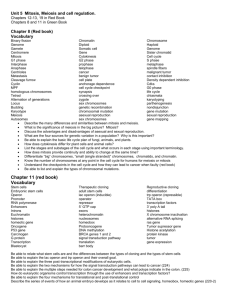

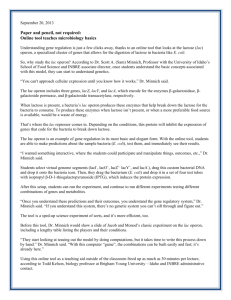
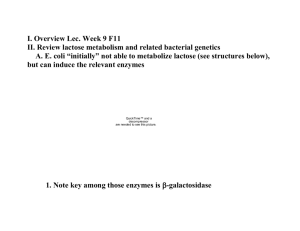
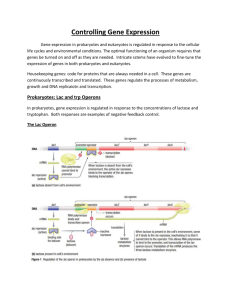
![Lac Operon AP Biology PhET Simulation[1]](http://s3.studylib.net/store/data/006805976_1-a15f6d5ce2299a278136113aece5b534-300x300.png)
